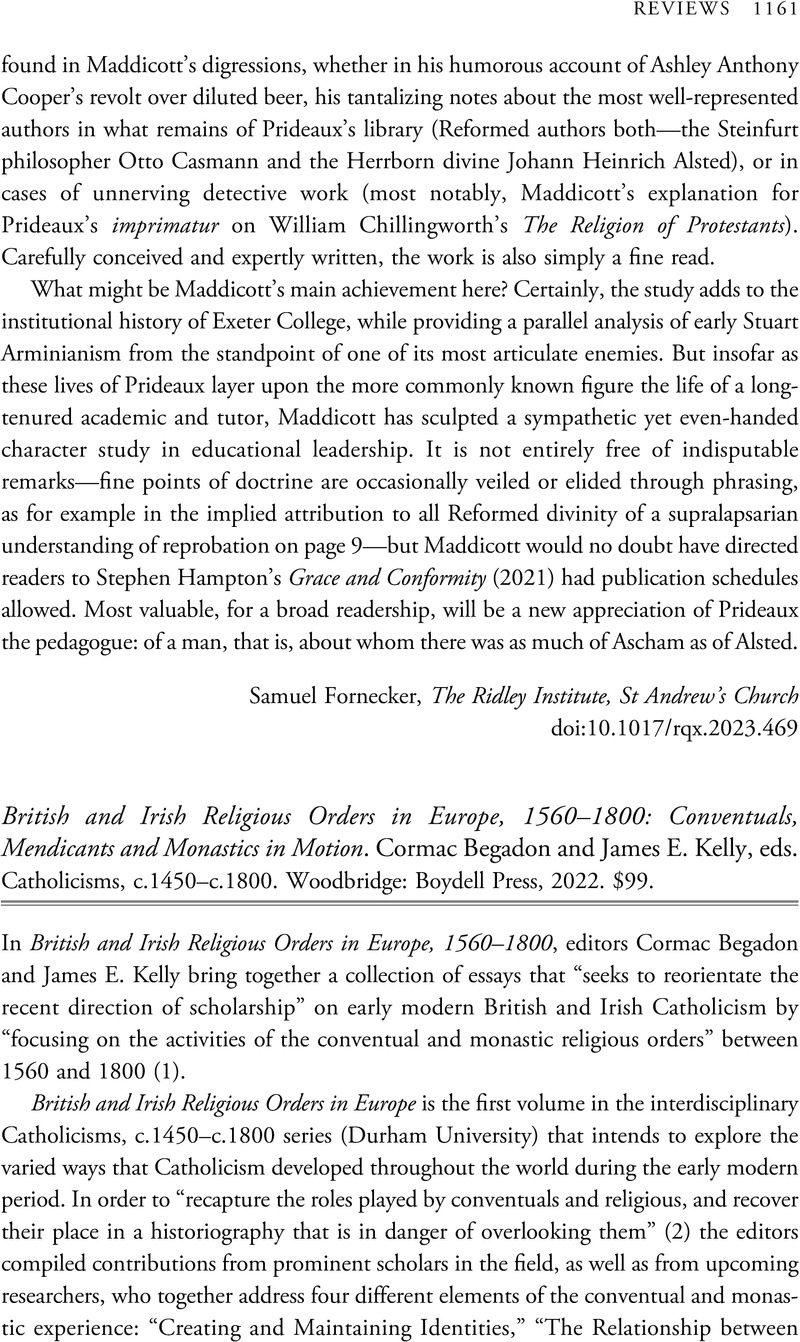No CrossRef data available.
Article contents
British and Irish Religious Orders in Europe, 1560–1800: Conventuals, Mendicants and Monastics in Motion. Cormac Begadon and James E. Kelly, eds. Catholicisms, c.1450–c.1800. Woodbridge: Boydell Press, 2022. $99.
Review products
British and Irish Religious Orders in Europe, 1560–1800: Conventuals, Mendicants and Monastics in Motion. Cormac Begadon and James E. Kelly, eds. Catholicisms, c.1450–c.1800. Woodbridge: Boydell Press, 2022. $99.
Published online by Cambridge University Press: 15 November 2023
Abstract
An abstract is not available for this content so a preview has been provided. Please use the Get access link above for information on how to access this content.

- Type
- Review
- Information
- Copyright
- Copyright © The Author(s), 2023. Published by the Renaissance Society of America



